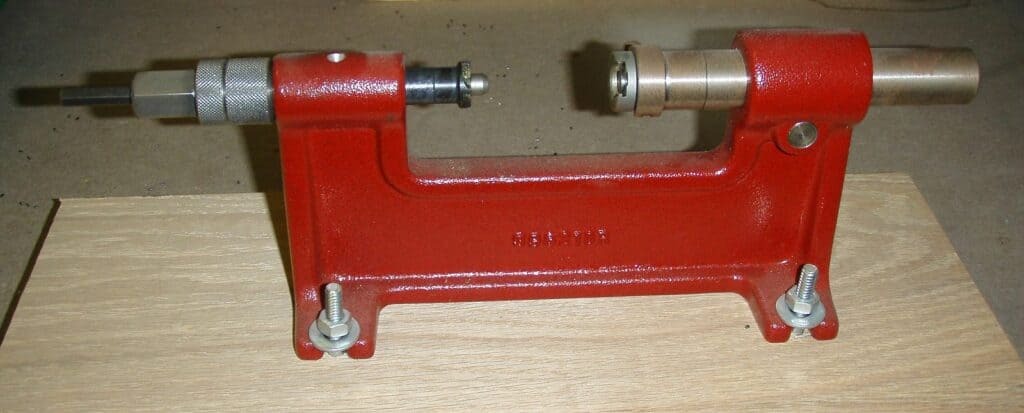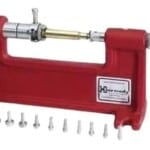
How to trim cases
Trimming cases is an important step in the reloading process to ensure consistent overall length and reliable chambering of the reloaded rounds. Nearly every reloading equipment manufacturer makes tools that can be used to help. Here are the steps to trim a cartridge case:
- Inspect the cases: Before trimming, carefully examine each cartridge case for signs of damage or excessive wear. Discard any cases that show cracks, splits, or other defects.
- Measure the overall length: Use a caliper or a case length gauge to measure the overall length of the cartridge case. This measurement will determine whether trimming is necessary.
- Determine the trim length: Consult a reloading manual or reliable data source to find the recommended trim length for the specific cartridge you are reloading. This trim length ensures the case fits properly in the firearm chamber.
- Set up the case trimming tool: Most case trimmers consist of a cutter and a pilot. The pilot centers the case in the trimmer and controls the length of the cut. Select the appropriate pilot size for your cartridge and install it in the trimmer according to the manufacturer's instructions.
- Trimming cases: Insert a case into the trimming tool, ensuring it is properly aligned with the pilot. Use the handle or power mechanism of the trimmer to cut away the excess length of the case. Follow the manufacturer's instructions for the specific trimmer you are using.
- Deburr and chamfer the case mouth: After you trim cases, the case mouth may have sharp edges. Use a deburring tool or chamfering tool to remove any burrs or sharpness from the inside and outside of the case mouth. This step prevents damage to the bullet during seating.
- Measure the final length: Once you have trimmed and deburred the case, measure the overall length again to confirm that it falls within the recommended range for your cartridge.
You need to trim cases for a few reasons:
- Ensuring consistent overall length: Over time, as cartridges are fired and resized, the brass case can stretch. Trim cases to remove the excess length and bring each case to a uniform length. Consistent overall length is important for reliable chambering of the round and consistent bullet seating depth.
- Preventing chambering issues: If a cartridge case becomes too long, it may not properly fit into the firearm chamber. Trimming ensures that the case is within the specified length range, allowing it to seat correctly and prevent malfunctions or dangerous chambering issues.
- Maximizing accuracy: Consistent overall length of the cartridge cases contributes to consistent bullet seating depth. When the bullet is seated at a consistent depth, it engages the rifling in the barrel consistently, which can improve accuracy.
By following the proper steps and trimming cases as needed, reloaders can ensure safe and reliable ammunition for their firearms. Remember to always consult reputable reloading manuals such as those from Lee, Hornady, Nosler, and Lyman and follow all safety precautions when reloading ammunition.
Excellent discussions on reloading can be found here.
If you know of any forums or sites that should be referenced on this listing, please let us know here.




